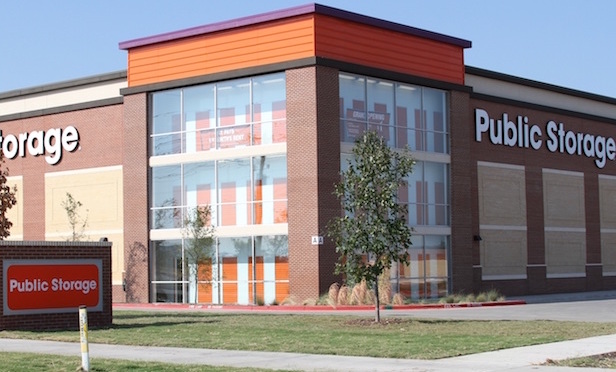 Public Storage opened this Frisco, TX facility this past September. Development is expected to add between 600 and 1,000 properties to the self-storage inventory over the next 12 months.
Public Storage opened this Frisco, TX facility this past September. Development is expected to add between 600 and 1,000 properties to the self-storage inventory over the next 12 months.
MILWAUKEE—Three of the largest self-storage REITs—Public Storage, Sovran Self Storage and CubeSmart—have now reported their first-quarter earnings, and the numbers bore out recent positive reports on the sector from R. W. Baird & Co., Marcus & Millichap and other sources. All-three posted double-digit year-over-year increases in same-store NOI, meeting or exceeding analysts’ expectations.
“With all signs pointing to a market willing to withstand more aggressive rent increases, we expect the storage REITs to become increasingly comfortable pushing the limits (rent increases) in this unprecedented time for storage,” Baird analysts RJ Milligan and William E. Hartman wrote last week. “Given historical peak occupancies heading into the leasing season, rental rate growth could surprise to the upside.”
In its latest Self-Storage Investment Forecast, Marcus & Millichap notes that the sector’s expansion cycle remains sound “as steady job growth supports unit-demand. Occupancy and rent levels are both expected to rise in the coming year.” Similarly, a recent high-level global outlook forecast from Heitman cites self-storage as one of the stalwarts among specialized property sectors.
As a case in point, CubeSmart’s 12.9% Y-O-Y SSNOI growth was driven by an 8.4% increase in revenues. In turn, CFO Tim Martin last week attributed the revenue gains to growth in net effective rent as well as a 150-basis point increase in occupancy to 91.9% during Q1. “When you take strong fundamentals in the sector and add our sophisticated operating platform, that equals continued performance well in excess of historic levels and in this quarter it had the impact of a mild winter in most of the country and the result is the second highest same-store NOI growth quarter in our company’s history,” Martin said on the company’s earnings call Friday.
The same economic and demographic trends sustaining multifamily demand are also boosting the self-storage sector, according to Marcus & Millichap. “Temporary storage required by more transient residents remains one of the main demand drivers for the sector. Additionally, the tighter living spaces offered by rental housing, particularly in urban locales, often cannot accommodate all of a resident’s belongings.”
In the public markets, Marcus & Millichap notes that self-storage REITs have outperformed most other investment funds, “pulling in consistent returns and steady stock appreciation.” Q1 saw REITs in this sector numbered among the segments that outperformed the FTSE NAREIT Equity REIT Index by a wide margin, with total returns up 10.85%, compared to 5.84% for the index as a whole. That compared to industrial with a 6.49% increase and hotels, up 6.09%.
Although Marcus & Millichap cautions that vacancy rates eventually will be challenged as the development pipeline fills, Baird sees some fairly high barriers to entry as bulwarks against this eventuality. “Development financing remains difficult across the board, entitlements in the top 20 markets are as difficult as they have ever been and storage developers are seeing increased competition for land parcels from retail/multifamily developers,” according to Baird’s analysts.
While many would-be self-storage operators are looking to get into the sector, Baird notes that “the execution remains difficult,” especially in markets where the REITs operate. Current projections range from 600 to 1,000 new properties coming on line over the next 12 months, “though we expect most of that to come in secondary and tertiary markets where the entitlement and land costs are much easier to manage.”

















 Copyright © 2024 ALM Global, LLC. All Rights Reserved.
Copyright © 2024 ALM Global, LLC. All Rights Reserved.